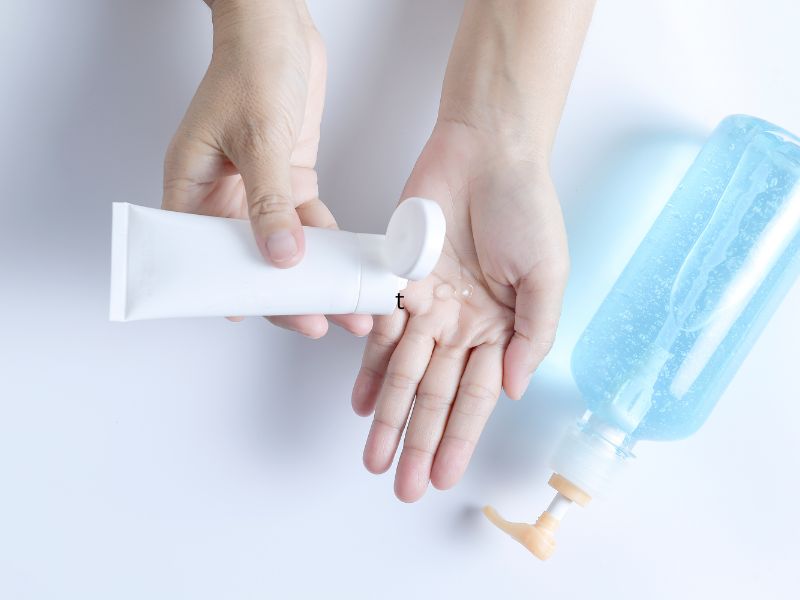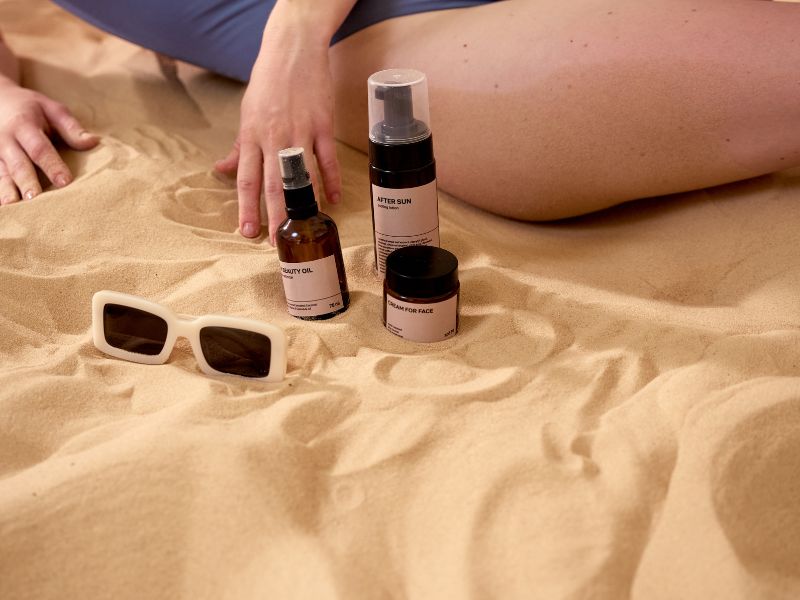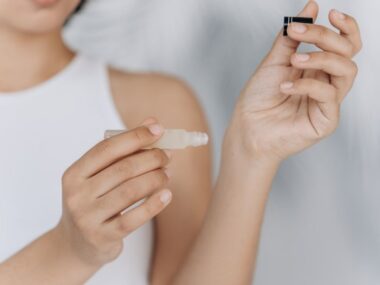Sunlight brings warmth, beauty, and essential vitamin D to our lives, but its ultraviolet (UV) rays can also pose serious risks to our skin. Overexposure to UV rays can lead to sunburn, premature ageing, and an increased risk of skin cancer. Sunscreen plays a crucial role in protecting our skin from these harmful effects, offering a reliable shield that allows us to enjoy the sun safely. But how does sunscreen protect us from the sun?
How Does Sunscreen Protect You From The Sun? Let’s look into the science behind sunscreen, understanding its types, ingredients, mechanisms, and essential role in skin health.
Understanding UV Radiation: UVA and UVB Rays
The sun emits different types of radiation, including UV radiation, which can penetrate the Earth’s atmosphere and reach our skin. UV radiation is divided into three primary types:
- UVA (Ultraviolet A): These rays have a longer wavelength and penetrate deeper into the skin, affecting the dermis layer. UVA rays contribute to premature ageing, wrinkling, and long-term skin damage. They are present year-round and can penetrate clouds and glass, meaning we’re exposed to them daily, even indoors if we’re near windows.
- UVB (Ultraviolet B): These rays have a shorter wavelength and primarily affect the skin’s outer layers, known as the epidermis. UVB rays are responsible for sunburns and play a significant role in the development of skin cancer. Unlike UVA rays, UVB exposure varies with seasons and is more intense during midday.
- UVC (Ultraviolet C): These rays are the most dangerous but are mostly absorbed by the Earth’s ozone layer and do not reach the ground.
Both UVA and UVB rays contribute to the risk of skin cancer and premature skin aging, but they affect the skin in slightly different ways. This dual threat is why effective sunscreens must offer “broad-spectrum” protection to shield against both types of UV radiation.
What is Sunscreen and How Does It Work?
Sunscreen is a topical product that contains active ingredients designed to block or absorb UV radiation, preventing it from penetrating the skin. These ingredients work in two primary ways:
- Physical Blockers (Mineral Sunscreens): Physical sunscreens, also known as mineral sunscreens, contain active mineral ingredients like zinc oxide and titanium dioxide. These ingredients sit on the skin’s surface and act as a barrier, reflecting or scattering UV rays away from the skin.
- Chemical Absorbers (Chemical Sunscreens): Chemical sunscreens contain organic (carbon-based) compounds, such as oxybenzone, avobenzone, octinoxate, and octocrylene. These compounds absorb UV radiation and undergo a chemical reaction that transforms the rays into harmless heat, which is then released from the skin.
Modern sunscreens often combine physical and chemical ingredients to provide effective broad-spectrum protection, ensuring both UVA and UVB rays are adequately managed.
The SPF Rating: What Does it Mean?
One of the most common metrics for sunscreen effectiveness is the Sun Protection Factor (SPF) rating. SPF primarily measures a sunscreen’s ability to block UVB rays and prevent sunburn. The higher the SPF number, the greater the level of protection against sunburn-causing UVB rays.
Here’s a quick breakdown of SPF values:
- SPF 15: Blocks about 93% of UVB rays.
- SPF 30: Blocks about 97% of UVB rays.
- SPF 50: Blocks about 98% of UVB rays.
These percentages might seem close, but they represent a significant difference in protection. For instance, if you’re prone to sunburn after 10 minutes in the sun, an SPF 15 sunscreen could theoretically extend your sun exposure to about 150 minutes before burning (15 times the natural sun exposure time). However, SPF values do not linearly increase in terms of protection, and no sunscreen can provide 100% protection.
Broad-Spectrum Protection: Guarding Against Both UVA and UVB
A sunscreen labelled as “broad-spectrum” indicates that it protects against both UVA and UVB rays. While SPF indicates the level of protection against UVB rays, there is no similar rating system for UVA protection. Broad-spectrum sunscreens are formulated to shield the skin from both types of rays, reducing the risk of sunburn, skin damage, and skin cancer. Many broad-spectrum sunscreens contain additional ingredients such as avobenzone and zinc oxide to enhance UVA protection.
The Ingredients that Make Sunscreen Effective
Sunscreens contain a blend of active ingredients that work together to filter out harmful UV radiation. Let’s look at some common sunscreen ingredients:
Physical Sunscreen Ingredients
- Zinc Oxide: This is a mineral ingredient that offers broad-spectrum protection. Zinc oxide effectively reflects both UVA and UVB rays and is often used in mineral sunscreens for its gentle nature, making it suitable for sensitive skin.
- Titanium Dioxide: Another mineral ingredient, titanium dioxide reflects and scatters UVB and some UVA rays. It’s commonly found in sunscreens and provides broad-spectrum protection.
Chemical Sunscreen Ingredients
- Avobenzone: This ingredient primarily provides UVA protection and is often used in broad-spectrum formulas to offer a comprehensive defense.
- Oxybenzone: A common ingredient for UVB protection, oxybenzone is sometimes used alongside avobenzone in broad-spectrum formulas.
- Octinoxate and Octocrylene: These ingredients are effective UVB blockers and can enhance the overall protection offered by sunscreen.
Additional Ingredients
Many sunscreens also contain antioxidants, moisturizing agents, and anti-inflammatory compounds to protect and soothe the skin. Ingredients like vitamin E, aloe vera, and green tea extract can provide additional benefits by neutralizing free radicals produced by sun exposure.
Application Techniques: How Does Sunscreen Protect You From The Sun?
Using sunscreen correctly is key to getting the full benefit of its protection. Here are some essential tips for applying sunscreen effectively:
- Apply Generously: Many people do not apply enough sunscreen, significantly reducing its effectiveness. It’s recommended to use about one ounce (roughly a shot glass full) of sunscreen for the entire body.
- Apply Before Sun Exposure: For chemical sunscreens, apply at least 15-30 minutes before sun exposure to give the ingredients time to absorb into the skin.
- Reapply Regularly: Sunscreen should be reapplied every two hours, or more frequently if you’re swimming, sweating, or towel-drying. Even “water-resistant” sunscreens require reapplication after water exposure.
- Cover All Exposed Areas: Commonly missed spots include the ears, neck, back of the hands, and tops of the feet. Lip balms with SPF can protect the lips, which are also vulnerable to sun damage.
- Use Even on Cloudy Days: Up to 80% of UV rays can penetrate clouds, so sunscreen is essential even on overcast days.
The Role of Sunscreen in Preventing Skin Cancer
One of the most significant benefits of sunscreen is its role in reducing the risk of skin cancer. According to the American Academy of Dermatology (AAD), regular sunscreen use can lower the risk of melanoma, the deadliest form of skin cancer, by up to 50%. UV radiation damages DNA in skin cells, and over time, these changes can lead to cancer. Sunscreen acts as a barrier, protecting the skin’s DNA from UV-induced mutations and preserving cellular health.
Types of Skin Cancer Associated with Sun Exposure
- Melanoma: This aggressive cancer affects the melanocytes, the cells responsible for producing melanin (skin pigment). While less common than other types, melanoma has a higher mortality rate.
- Basal Cell Carcinoma (BCC): This is the most common type of skin cancer and typically appears as small, shiny bumps on sun-exposed areas.
- Squamous Cell Carcinoma (SCC): SCC often manifests as scaly, red patches and can develop into a more invasive form if left untreated.
Consistent sunscreen use helps to reduce exposure to harmful UV radiation, lowering the risk of these cancers by protecting the skin’s cells from damage.
Other Benefits of Sunscreen: Maintaining Youthful Skin
Beyond cancer prevention, sunscreen plays a crucial role in maintaining the skin’s youthful appearance. UV radiation accelerates skin ageing by breaking down collagen, causing wrinkles, fine lines, and hyperpigmentation. By protecting against UVA and UVB rays, sunscreen minimizes these effects, helping the skin retain its firmness, elasticity, and even tone.
Addressing Concerns and Myths About Sunscreen
Although sunscreen is essential for skin protection, some concerns persist, particularly about the safety of certain ingredients. Here are some common myths and the facts behind them:
- Myth: Sunscreen causes vitamin D deficiency. While it’s true that UVB rays are essential for vitamin D production, studies show that regular sunscreen use does not lead to significant vitamin D deficiency. Moderate, incidental sun exposure is typically enough for sufficient vitamin D levels.
- Myth: Sunscreen is only necessary on sunny days. As noted, UV rays penetrate clouds, and UVA rays can even pass through glass. Therefore, sunscreen is necessary regardless of the weather or indoor/outdoor status.
- Myth: Higher SPF provides complete protection. While higher SPF sunscreens offer greater UVB protection, no sunscreen blocks 100% of UV rays, and broad-spectrum products are necessary to ensure UVA coverage.
The Future of Sunscreen: Innovations and Trends
The sunscreen industry has evolved rapidly to meet the growing demand for safer, more effective sun protection. Emerging trends include:
- Mineral-Based Formulas: Mineral sunscreens are popular for sensitive skin and the environment, with non-nano zinc oxide and titanium dioxide gaining favour for their safety profile.
- Waterless Formulas: To reduce environmental impact, some brands are developing waterless sunscreens, which minimize preservatives and offer concentrated formulas.
- Environmental Impact Awareness: Certain sunscreen chemicals, like oxybenzone and octinoxate, can harm coral reefs. Some regions have banned these chemicals, and brands are now creating reef-safe formulas that avoid potentially damaging ingredients.
Conclusion
Sunscreen is a powerful tool for protecting skin from the sun’s harmful rays. With its ability to block or absorb UV radiation, sunscreen reduces the risk of sunburn, premature aging, and skin cancer, making it essential for everyday skin care. By understanding the science of sunscreen and using it consistently, we can enjoy the sun safely while preserving our skin’s health and youth. Whether you prefer a mineral or chemical sunscreen, choosing a broad-spectrum product and applying it correctly will ensure you’re well-protected and ready to embrace the sun’s warmth responsibly.






